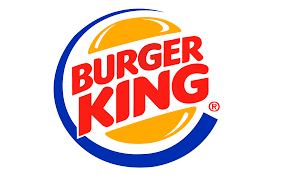
Expectations move at the speed of the consumer. They never diminish; they only increase, and they increase all the time. Over the past decade, consumer expectations have increased about 18% a year. Brands, on average, only manage to keep up by about 9%, so there’s always a pretty significant gap between what consumers expect and what brands deliver. Brands that deliver best are always the category leaders.
Accompanying those increased expectations are category value shifts. And when value shifts reach critical mass – the marketing version of astronomical accretion takes place – instead of planets, new categories are formed. When that happens brands have to decide who they are, and whether, and where, they’re going to “live” – in the newly created category or in their old category.
Think about how fast food – you remember, basic inexpensive burgers, fries, soft drinks, and hot apple pies – and the Holy Trinity of Fast Food: salt, fat, and sugar lived contentedly in Fast Food land. Those brands watched as parts of their neighborhood gentrified into the Customization Community, Health-Conscious Heights, Gluten-Free Gulch, Casual City, its suburb, Fast-Casual County, Salad Street, and Anti-Antibiotic Avenue. Then some of the fast food brands tried to move into all those neighborhoods. The leader of that emigration was McDonald’s – a brand recently using customization and kale to help determine where they were going to end up living. They were quickly followed by some of the other then-leading traditional fast food brands, like the currently we’re-more-natural Wendy’s, and younger brands like Chick-fil-A.
Burger King was one of the traditional fast food brands. They yearned to move into other higher-end neighborhoods too. It took a few years of unsuccessful moves involving overstuffed menus, apple cranberry salads, wraps, “healthy” potatoes (http://tinyurl.com/je2whru) and forays into areas like smoothies and flavored coffees and lattes, to convince them to move back to their old neighborhood in Fast Food land, where consumers’ expectations-based zoning regulations actually encouraged flame-grilled burgers, fries, and (now) hot dogs, eschewing any high-end, low-calorie modifications to the brand.
Smart move? Well, when we looked at the Fast Food category in our 2016 Customer Loyalty Engagement Index, we saw a couple of notable shifts. The list of Fast Food brands had gotten longer, and the names consumers had added were those of, well, basic, last-century fast food brands. An expanded list of brands is something that only happens when consumers are looking for something to fill that gap between what they really want and what current brands are delivering.
So while the addition of more, basic fast food brands to that decision set – including Jack in the Box, In-N-Out Burger, Whataburger, and Carl’s, Jr. (see a pattern here?) – may not make competing any easier for the rest of the brands, it’s a pretty good roadmap as to the best place for a brand like Burger King to live.
Find out more about what makes customer loyalty happen and how Brand Keys metrics is able to predict future consumer behavior: brandkeys.com. Visit our YouTube channel to learn more about Brand Keys methodology, applications and case studies.
Share this: